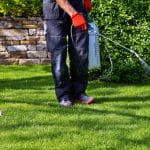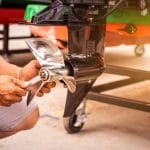Your older vehicle has been your faithful companion through countless commutes, but as the seasons change, so do its needs, especially when it comes to tire care. Follow these seasonal tire car tips for your older vehicle to keep you driving smoothly through every season.
Why Tire Care Matters for Older Vehicles
As your car ages, various systems wear out, which can impact your tires. Additionally, older tire pressure monitoring systems may be less accurate or non-existent, making regular manual checks essential.
When you wear out the tires, it can be expensive to replace them; therefore, following seasonal tire care can help keep them in good condition for longer. Once you need replacements, follow certain steps to save money on new tires and avoid breaking the bank.
Summer Maintenance: Heat Management
Summer heat poses the greatest threat to tire integrity, particularly for older vehicles that may lack advanced cooling systems. High temperatures increase tire pressure, making it essential to monitor your tires during this season.
Monitor tire pressure weekly during the summer months. You should check the pressure when the tires are cool; that way, you can get an accurate reading compared to when they are hot. The heat can increase pressure readings by four to six PDI, giving you inaccurate results.
Fall Maintenance: Winter Readiness
Fall is the best time to prepare for winter conditions. This season is the easiest and provides the last chance to address any tire issues before winter arrives.
Evaluate remaining tread depth carefully, as winter conditions require more tread for adequate traction. Consider tire age alongside tread depth. Even if tread appears adequate, tires older than six years may lack the flexibility needed for winter traction.
Winter Maintenance: Extreme Condition Preparedness
Winter is the most challenging time for tire performance. It requires heightened attention to pressure, tread, and overall tire condition.
Tire pressure can deteriorate during the cold winter months, so it is important to check the pressure frequently. Keep your tires at a slightly higher pressure to enhance fuel efficiency during winter without compromising traction.
Slow down during the winter, since higher speeds reduce your car’s traction capabilities. Older vehicles may lack electronic stability control systems, making driver awareness and adjustment even more crucial for safety. Emergency supplies are a valuable addition to your car during this season, in case you encounter any tire or general car problems.
Spring Maintenance: Post-Winter Recovery
When spring arrives, you can help your tires recover from the winter months. Start by conducting a thorough visual inspection, looking for cracks, bulges, or embedded debris that may have occurred during winter driving.
Check your tire pressure carefully during the spring, since temperatures fluctuate, which can cause pressure variations that change when you fill up your tires next. Use the penny test to inspect your tire tread depth and determine if a replacement is needed.
Now that you know these tips to keep your older car’s tires healthy in any season, you can invest in your tires to keep you driving year-round. Your older vehicle may lack modern tire monitoring technology. Still, with proper attention and care, its tires can continue to provide safe and efficient performance for many more seasons of daily commuting.






